अश्मिता गुप्ता
अश्मिता गुप्ता
Ashmita Gupta
अश्मिता गुप्ता
Form and
CULTURE

Guided by
Amresh Panigrahi | Dr. Migir Bhole
INTRODUCTION
"Form" refers to the visual and structural components of a creation, such as arrangement, composition, and stylistic features that influence the overall appearance of the work in design, art, and communication. Conversely, "culture" refers to a group's common values, beliefs, practices, and artifacts—both material and immaterial—that shape how members of the group see and engage with the outside world.
CONTENT
ABOUT
CULTURE
01.
02.
RELATION BETWEEN F&C
REGINAL PRODUCTS
03.
MIND MAPPING
04.
MOUSE TRAP
05.
06.
CINEMA
FORCES
07.
WHAT IF QUESTIONS
08.
FUTURE WHEEL
09.
FORCE
TRAILS
07.
FINAL SKETCH
08.
PROCESS
09.
MOCK UP
10.
FINAL PROTOTYPE
11.
LEARNINGS
12.
01.
WHAT IS CULTURE?
A word culture is a way of life that connects a group of people with the behaviors,
beliefs, values, and symbols they embrace without question. They are handed down from generation to generation through communication and imitation. It’s
what makes each group of people unique and defines their identity.
There are many ways to define culture. Culture is how we express ourselves as individuals
in visuals and groups, including our traditions, methods of doing things, how we ex-
press ourselves, and how we dress. A narrower definition of culture is the artifacts
we create, which reflect our beliefs and perspectives. Culture is how we express
ourselves as people and groups.
TYPES OF CULTURE
Enculturation
When you are a native of a specific location and only learn about their culture there.
Example: Food and diet, dress code, parenthood style, marriage, workplace culture etc.
Acculturation
When learning happens through seeing or observation.
Example: Learning a new language, changing dress and new appearances, adjusting to new food and cuisine etc
Material culture
Material culture includes tangible artifacts and objects that are deliberately pro-
duced by human beings.
Example: Learning a new language, garments, equipment
Non-material
Non-material culture includes the intangible concepts and cognitive processes that
make up a given culture.
Example: Traffic rules, linguistic expressions, and clothing norms.
Culture transmission
Non-material culture includes the intangible concepts and cognitive processes that
make up a given culture.
Example: Vertical, horizontal, and oblique.

02.
Relation between
FORM AND CULTURE
FORM
CULTURE
Forming
Informing
Forming
Informing
Forming
Something wasn’t there and then it happened.
Eg:- Normal ground existed, but it had been converted into a basketball court.
Form FORMING Form
1. Bricks to Building
2. Stone to Shivling
Culture FORMING Culture
1. Renting cycle to Frequent cycling
2. Late-night work culture to Midnight snacking
Form FORMING Culture
1. Earphones to Personalized music experience
2. Fitness band to Personalized fitness culture
Culture FORMING Form
1. Rangoli to Sticker
2. Uttarayan to Manja Protector
CULTURE
FORM
Informing
Something existed, but it changed or modified.
E.g.:- Basketball court converted into a lawn
Form INFORMING Form
1. Plastic bag to Own bag
2. Cow dunk to Idol worship
Culture INFORMING Culture
1. Office work to Work from home
2. Companionship to Dating app culture
Form INFORMING Culture
1. Plastic bag to Own bag
2. Cow dunk to Idol worship
Form INFORMING Form
1. Taxi to App to based (ola, uber)
2. Auto stand to Transportation
03.
REGIONAL PRODUCTS

Chavar
Chavar

Ghanta

Charan paduka


Arti Daani
Arti Daani
Musal
Above are a few products/objects from the region I belong to Raebareli (Uttar Pradesh).
Brought forms from our areas or regions to have a deeper knowledge of form and culture, how it has been used, and to study the evolution of forms and how people use them.
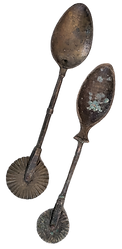
Ghujiya Cutter
MIND MAPPING
04.
Deep knowledge about Culture
Cultural street walk
Form selection
Digging out the Forces
Discussion on Culture forms
Discussion on Evolution of forms
Watched movies
Interviews
STREET WALK
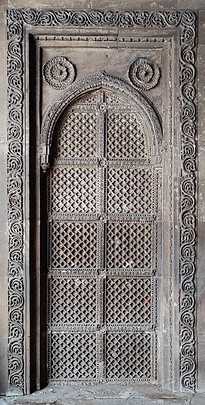













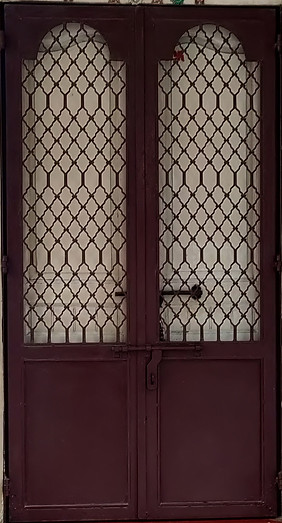
• To enhance one’s understanding of forms. • How individuals use it. • The topic under consideration certains to the concept of variation, as well as its historical and modern uses. A form is an integral component of a vibrant and evolving culture. • The term “stool” refers to how an individual positions themselves when seated, the act of using a stool for seating purposes, and the location in which the stool is typically stored. • The interplay between form and the human experience. • What is the reason for the specific design of this form?
MOUSE TRAP
05.

During a talk with Amresh, I found myself split between two intriguing topics: doors and mouse traps. Recognizing the situation, Amresh suggested that I research the topic of mouse traps, emphasizing its novelty and lack of past investigation. In light of this approach, I am reconsidering my decision to use mouse traps in the first place since I am opposed to watching mice die. Additional talks with my friends, however, led to the final selection of mouse traps as a topic to move forward with.
In brief, it may be said that guidance can be beneficial in situations where individuals find themselves unable to think clearly and uncertain about the appropriate
course of action to pursue.
DEEP UNDERSTANDING OF MOUSE AND MOUSE TRAPS
I looked for interviews, images, and videos on how people treat them, why people buy the form and the goal of owning a certain form. I also looked for different forms that are man-made, industrial-made, and DIY form, and also the types of form






KARNI MATA TEMPLE
(Rajasthan)



The Karni Mata Mandir, located near Bikaner, is renowned for its population of over 25,000 freely roaming rats. They manifest through crevices in the walls and floors, often encroaching on guests and religious practices. The act of consuming food that has been masticated by rodents is seen as a sacred ritual within this cultural context.
THE GODS MUST BE CRAZY
06.
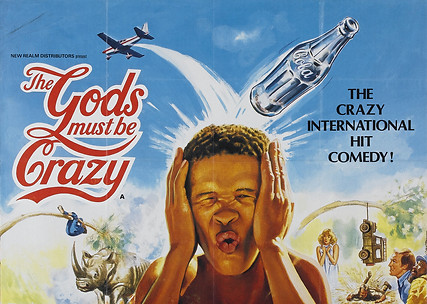
"The Gods Must Be Crazy" shows how Bushmen culture and contemporary civilization vary through interviews with socialized members of each. Characters vary in behavior, attitudes, perspectives, etc. The the film illustrates the diversity and civilizational differences.
CONTEXTUAL SETTING CHANGE
• When bottles drop from the sky(plane) and they think God has given them something.
• Interpretation of their meaning for individuals.
• Sound, stamping, hammering, painting, These define the form used for several objects.
• Holding of that object has also changed.
• Form and emotion (bonding start, limited objects, scarcity shown, People fought for it) generate.
• Form and its meaning generated.
• Earlier values have also been changed/altered just because of one object.
• New norms generated that they felt upset after burying it.
FORCES
07.
I initiated the process of identifying and analyzing the forces in collaboration with
my peers. We examined the extracted forces and assessed their relevance to my specific area of study. Additionally, we engaged in a collective discussion to determine
the appropriate categorization of each area. Subsequently, we proceeded with the
extraction process, resulting in the following identified forces:
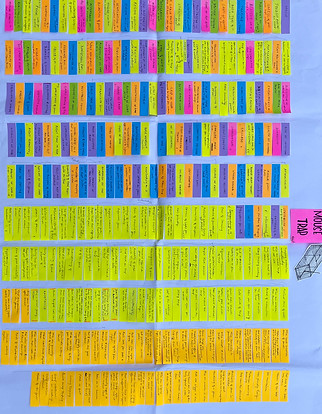
For detailed view: https://drive.google.com/drive/folders/1v8Q2kBI6n_1a3FjrwOvtZ2KQDd7Cz4QY?usp=sharing
Availability of mice inside the house
Minimal /easy mechanism of trap
People feel disgusted towards the mouse
Visibility of food
Right geometry
Phobia of rats
Heavy cage
User-friendly design
Ventilation of the trap
Snap can be loud (for letting humans catch them)
Cost of material used in making of form
Affordable form
Ease of food accessibilty
Management of space
Durability of food
Keep track of traps
FORCES CATEGORIZATION
We made clusters of forces to identify and analyze these forces to better understand how they interact and influence the form.
Grouping is based on identifying the underlying link/thought and then articulating that thought.
Creative not Conventional.
Articulation of the headings should give orientation to the subject.
Finding inter-relationships and keeping away from the hierarchy.
"Forces are like ingredients in cooking, the context defines the usage.”
Amresh

For detailed view: C:\Users\ashi6\Documents\Form and culture.xlsx
Features of mouse
• Rats easily believe humans
• Mice can’t see well in dark
• Rats are bigger in size
• Rats are smart
• Mice are highly intelligent rodents
• Mouses are smelly
• Mice are smaller in size
• Rats can live up to 4 years
Structure of form
• Breathable space inside form
• Delicate form
• Compact form
• Spacious for the mouse to get inside the trap
• Ventilation of trap
• Source of light for inside
• Transparent structure of form
• Visibility of food
OVERVIEW LINKING OF FORCES
Approach- Color coding on the basis of different factors and overall linking of the forces with each other. Color coding acted as an identifier, not as an influencer.
When the forces interact, it builds the culture.
Linking from a perspective:-
People have various opinions regarding mice.

For detailed view: https://miro.com/app/board/uXjVMz9cHhI=/
• Conscious iterations are the key.
• The orientation of the links affects the perspective of the form.
• Different perspectives act a different lens for viewing the subject.
• The intensity of the links, defines the intensity of the force on the form.
WHAT IF QUESTION
08.
Hypothetical questions framed after identifying key forces
What if mice became as intelligent as humans?
What if catching a mouse was illegal?
What if mice became as intelligent as humans?
What if a mouse trap has the features of a camera that connects to an application?
What if catching a mouse was illegal?
What if mice could travel on walls instead of the ground?
What if a mouse trap can be reused to catch multiple mice?
What if a mouse trap could tell you when a mouse is being trapped
SELECTED QUESTION
What if mice could travel on walls instead of the ground?
Redefined-
WHAT IF MOUSE COULD
TRAVEL ON WALLS?
CHANGE IN THE FORM
Identifying the effect of the imaginary scenario on the form and its culture.
There will be a contextual change in the forces which will be relevant in a given time and setting.
• Identifying the impact of forces and defining the bandwidth of each one of them.
• Categorizing them on the basis of their degree of impact- high, medium, and low.
• Unfolding the layers involved in the form and its culture as well as understanding the ripple effect.
Understanding the effect of a slight change in any of the forces and the linking is equivalent to a metaphor of passing electric current and spreading of the charge.

For detailed view: C:\Users\ashi6\Documents\Form and culture.xlsx
FUTURE WHEEL
09.
H i g h I m p a c t
M e d i u m I m p a c t
L o w I m p a c t


FORCE TRAILS
10.
• Take four keywords
• Permutation and combination of forces which are different kinds of ideas
• Higher, middle, and lower priority zone
• Random pick from each zone and see what came out
• Connect 4 forces and place them according to an idea
• Put your trails and see what can be the possible outcome with different keywords
• Sketch ideas
Trail
What if?
H
M
L
1
2
3
Trail
Mouse trap could appear as a wall piece
High maintenance
Different regions
required different forms
Scrap material
The trap should be hung on walls
Experience of catching would be less required
Familiar form for people
Unfamiliar form for the mouse
Trap sound should not be too loud
Mice are afraid of lights
They come half an hour after sunset
Space management
Placed trap every 2-3 feet on walls
Experience of catching would be less required
Can have both difficult and easy cleaning process
No. of hidden traps can help to trap a mouse
Different mechanisms of trap
Man-made form
Mechanism ensure durability
User-friendly design
IDEATIONS

_PNG.png)
_JPG.jpg)
_PNG.png)
_PNG.png)
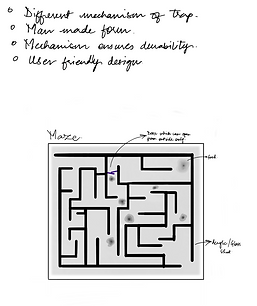_PNG.png)
_JPG.jpg)
_JPG.jpg)
_PNG.png)
_PNG.png)
_PNG.png)
_JPG.jpg)
_PNG.png)
_PNG.png)
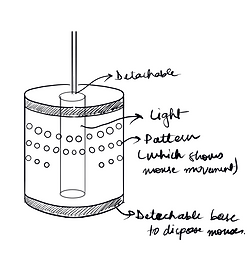_PNG.png)
FINAL SKETCH
11.
• Form which can also go on the table • What if the customer wants to change the orientation of the form
• What if I can make the surface changeable • What would be the form if it goes on the table, wall, or floor?
• What if someone carries it beautifully • What if people are not ashamed of using the product
• A combination of elements managed in that way, so that it can go anywhere • Home decor + mouse trap • Aesthetically pleasing • Rough surface for gripping • Contemporary aspect • Aesthetically beautiful • Adjustable form

Orientation of the form
I am making sure that the orientation is correct in order to determine which one is appropriate for catching a mouse.
Front View


Side View

Detachable section
Joinery


Door (side view)
Back View

Why this form?
• Greeny can stop items from being dirty • Greenery goes for hygienic • Scientific parameters • Greenery for cleanliness • Easy to maintain • Less hygienic • Easy to sustain • Catcher and planter (even if we remove the trap then we can use the product and also looks pleasing and attractive) • Easy to handle • We interact every day • Easy to detach • Even if the product is hanging it gives the sense of surface • Easy to open
DOOR/ HINGE EXPLORATIONS
_PNG.png)
_PNG.png)
01.
02.
_PNG.png)
03.
THE PROCESS
12.





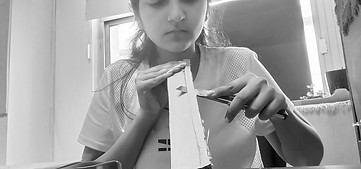





MOCK UP
13.
Mouse Trap cum Planter






FINAL PROTOTYPE
13.
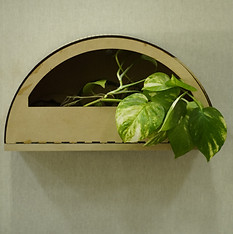



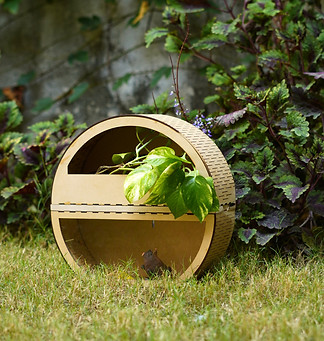
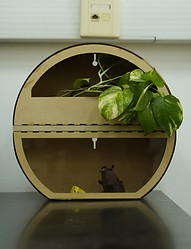


MECHANSIM



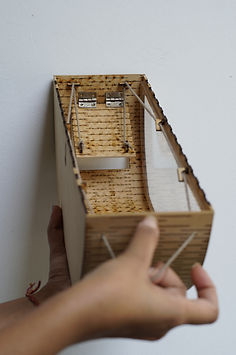
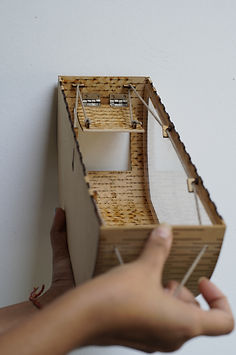


Form and Culture helped me to understand the value and so many aspects of it.
I've learned the different types of culture and their meaning and also how people actually adopt the culture and the way of using it.
I've also learned about the forces that revolve around each and every product/ object which helps form to exist and and also not to exist.
This module also helped to make the future wheel where we can come up with new products and the process behind its culture.
I have acquired the ability to recognize the hidden attributes that characterize formations and have precise impacts on human existence. I have also acquired knowledge of the process of form development and its natural association with cultural aspects.